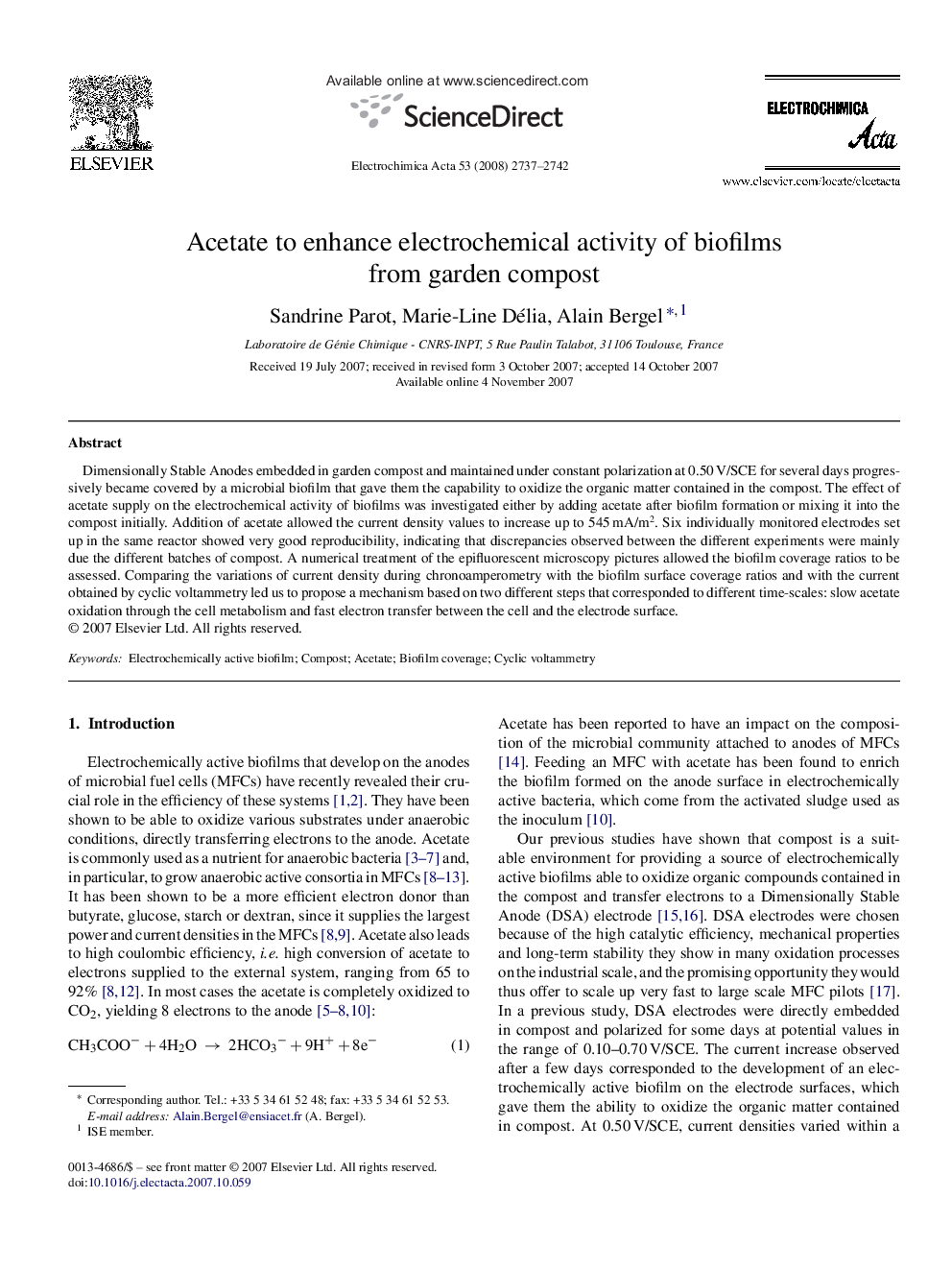| Article ID | Journal | Published Year | Pages | File Type |
|---|---|---|---|---|
| 193557 | Electrochimica Acta | 2008 | 6 Pages |
Dimensionally Stable Anodes embedded in garden compost and maintained under constant polarization at 0.50 V/SCE for several days progressively became covered by a microbial biofilm that gave them the capability to oxidize the organic matter contained in the compost. The effect of acetate supply on the electrochemical activity of biofilms was investigated either by adding acetate after biofilm formation or mixing it into the compost initially. Addition of acetate allowed the current density values to increase up to 545 mA/m2. Six individually monitored electrodes set up in the same reactor showed very good reproducibility, indicating that discrepancies observed between the different experiments were mainly due the different batches of compost. A numerical treatment of the epifluorescent microscopy pictures allowed the biofilm coverage ratios to be assessed. Comparing the variations of current density during chronoamperometry with the biofilm surface coverage ratios and with the current obtained by cyclic voltammetry led us to propose a mechanism based on two different steps that corresponded to different time-scales: slow acetate oxidation through the cell metabolism and fast electron transfer between the cell and the electrode surface.
